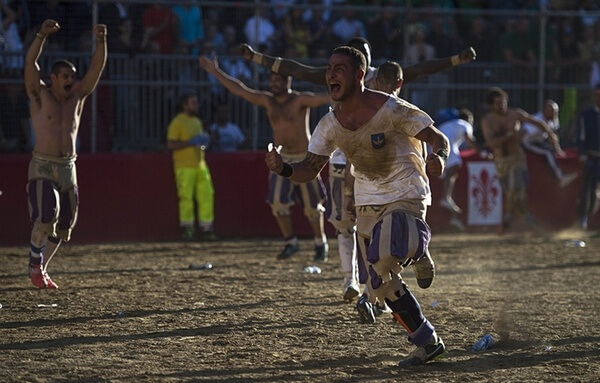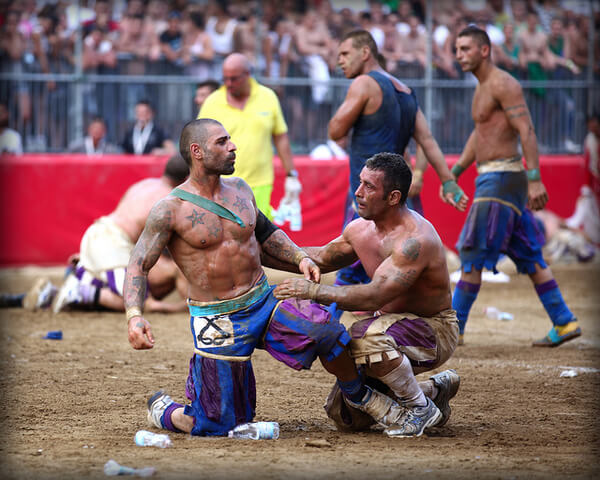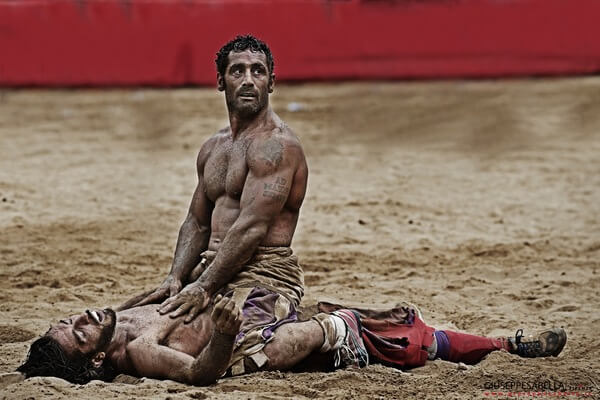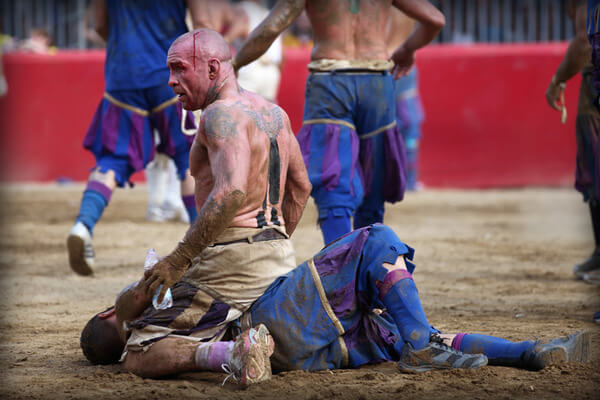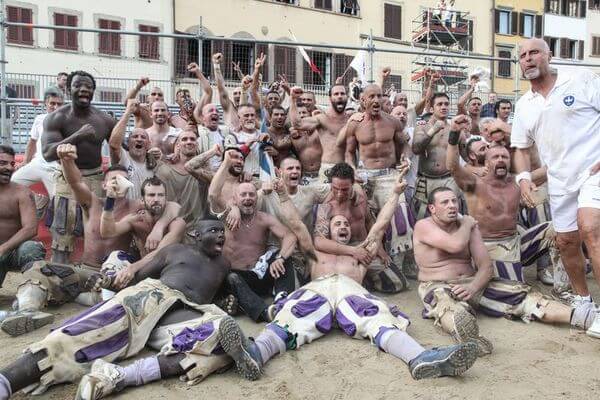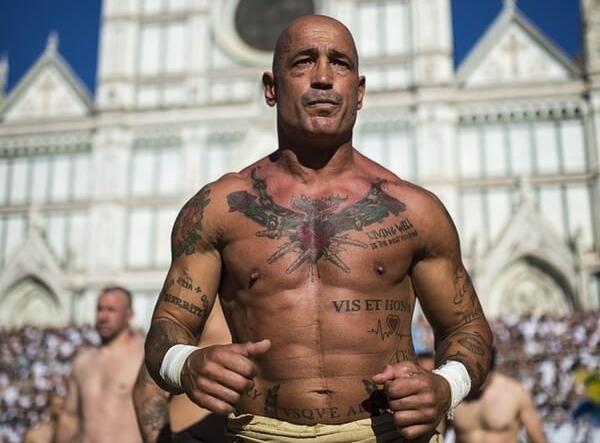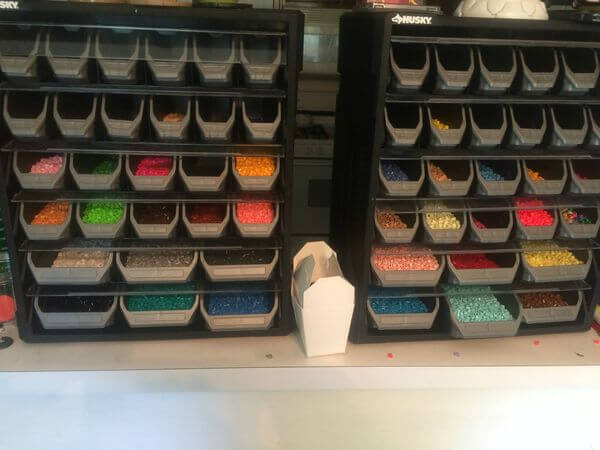Calcio Storico also known as historic football is how they played football all the way back to the 16th century, but that’s about the only similarities to this game to football as you know it. We will explain the rules below.
Every June are the playoff games and final game of the Calcio Storico and if you are in the area of Florence, make sure to head over to patron saint’s feast day to watch the match.
Fun fact – You can actually watch the game on TV as the international rights have been sold to a network called DAZN.
Calcio Storico Fiorentino is a ruthless game. If you can call it that. Think of a combination of football, soccer, rugby, wrestling and MMA at all once
About Calcio Storico
Calcio Storico Fiorentino is game invented in the 16th century Florence and is still being played in that area today. It is soccer, rugby and MMA all mixed together. There are basically just 4 teams based on the historical neighborhoods of the city that play each other each year in semi final and final format.
Here are the four teams that compete in this sport:
- Santa Croce ( Azzurri – blues )
- Santo Spirito ( Bianchi – Whites )
- Santa Maria Noella ( Rossi – Reds )
- San Giovanni ( Verdi – Greens )
The games are played at Piazza Santa Croce which is located in front of the church Santa Croce and the field itself is just a dirt field to resemble the times of the history.
What does Calcio Storico means?
Calcio means Kick ( foot ) and Storico means Historic, hence the name Historic Football
How to play the game of Calico Storico
Each team consists of 27 players and there are 50 minutes to play the game. The team who scores the most goals, wins the match.
The official rules were introduced in the 1580 by a man called Giovanni De Bardi which was a count. The game was actually a rich people game and was only played by the high society of people in town.
Both feet and hands are allowed to play the game and catch the ball and the goal is to score goals which is done by either throwing or kicking the ball over a specific spot next to a wall on the field.
There is a main judge with six others that keep the game in check. There is also a master referee which conducts the game.
The winning team gets a Chianina Calf! Which is a big deal.
The teams are drawn by choosing random balls painted with color.
When is the game played?
The whole thing takes place inside of one weekend in early June, the two semifinals are playing each other and the two winners meet in the final game which is always played on June 24th at 5pm.
Before the final day there is a parade with everyone wearing historic costumes and they walk from Piazza Santa Maria Novella to Piazza Santa Croce.
Every team takes part of the parade, even the teams that lost and won’t be playing the final match.
The event ends with massive fireworks from the church and the winning team celebrating.
How to get tickets?
Tickets are sold from June 6 and you can get them from the box office headquarters on via delle Vecchie Carceri
| Monday 6/6 | from 4pm | |
| Tuesday – Thursday 7 – 9/6 | 9am to 4pm | |
| Friday 10/6 | 12pm to 7pm | Only at Teatro Verdi |
| Saturday 6/11 | 12pm to 6pm | Only at Teatro Verdi |
Cost
| Tribuna Onore Centrale | 80 EU | |
| Tribuna Onore Laterale | 60 EU | |
| Tribuna C | 40 EU | |
| Curve Colori | 29 EU |
For the final tickets will be sold from June 17 from the Toscana Murate headquarters, from 2pm to 8pm.
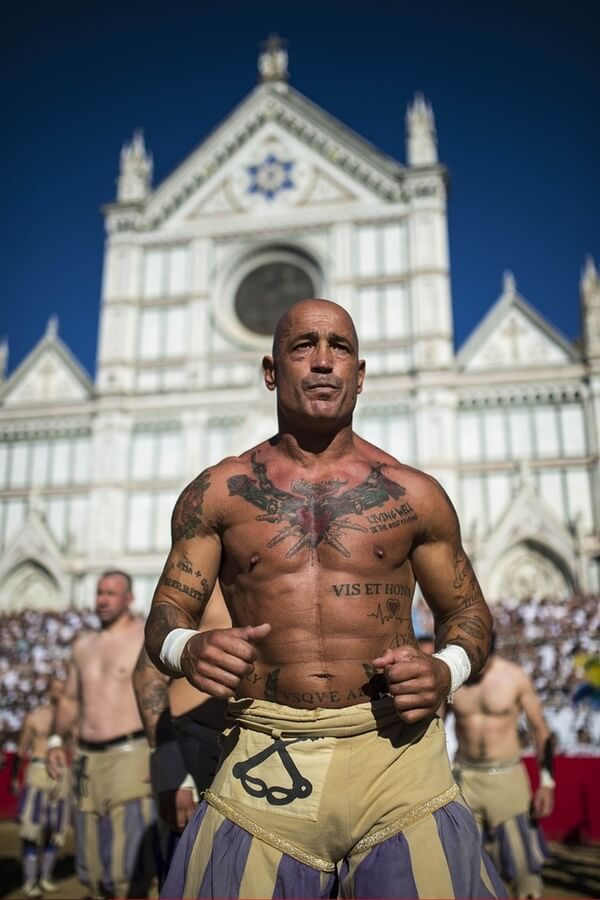
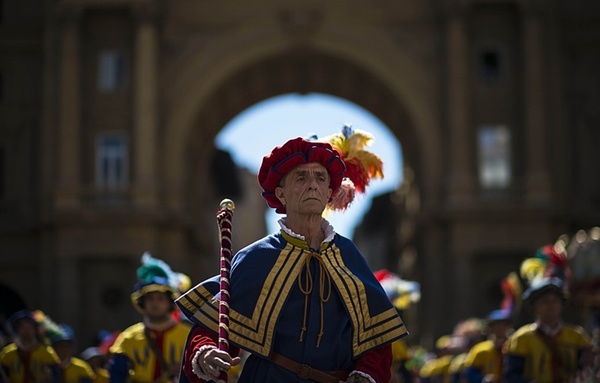
Santa Croce square where the final is being played on a field of sand with 27 players for each team
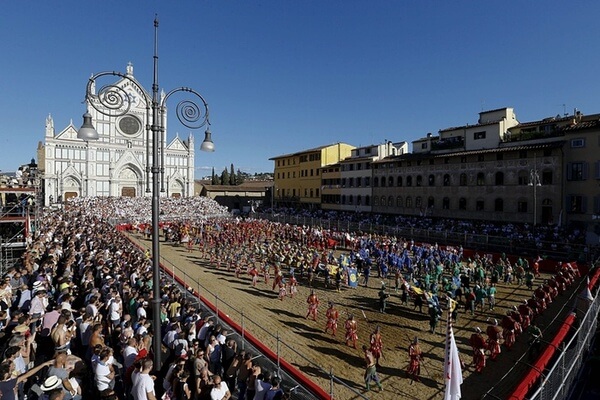
The final lasts for 50 minutes – in the picture below, the Santo Spirito players bond before the game
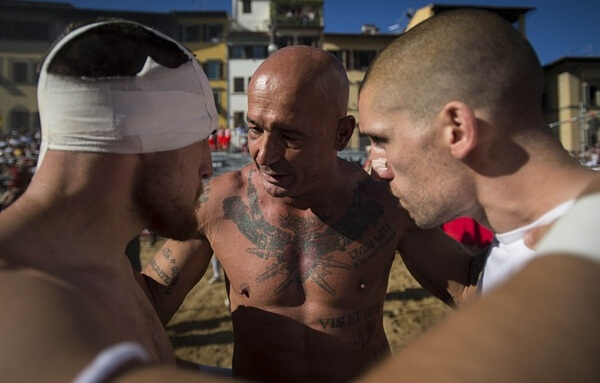
The start of the match is signaled by cannon fire
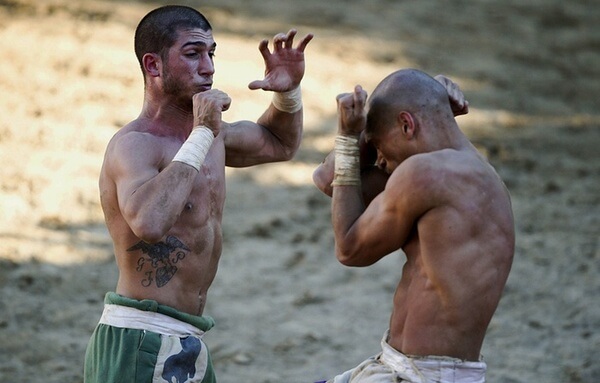
The players fight for the ball and try to score goals by throwing it over a narrow slit at each side
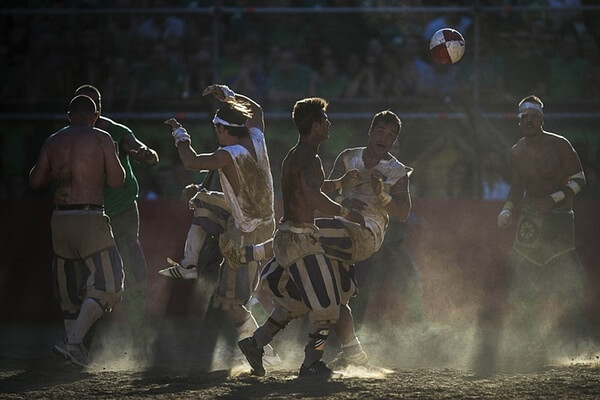
There are six linesmen and one referee that is called the master of the field, there is also one more off field judge
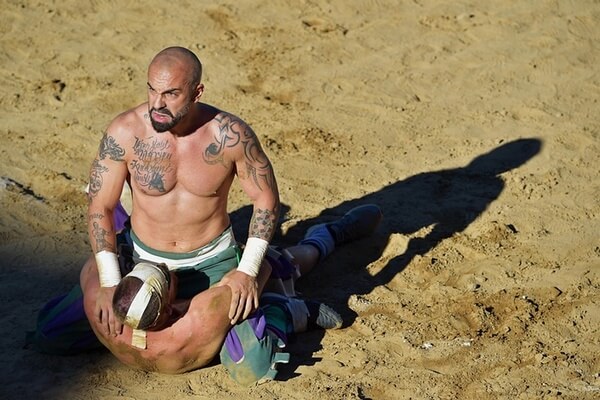
For 50 minutes, they battle with no breaks. Even if a player is injured and needs to leave the field the game continues and there are no substitutions
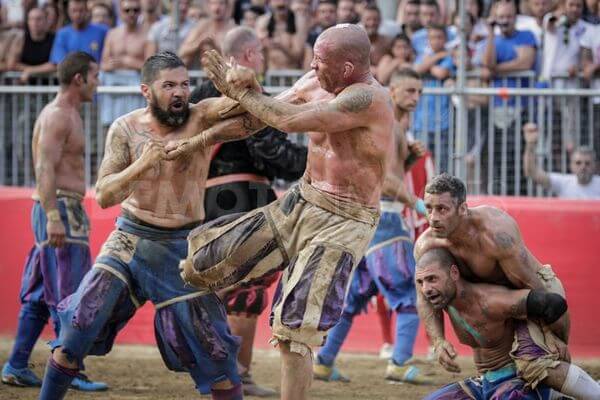
You can use martial arts but it is illegal to attack an opponent with more than one player, any violation of the rules can lead to expulsion
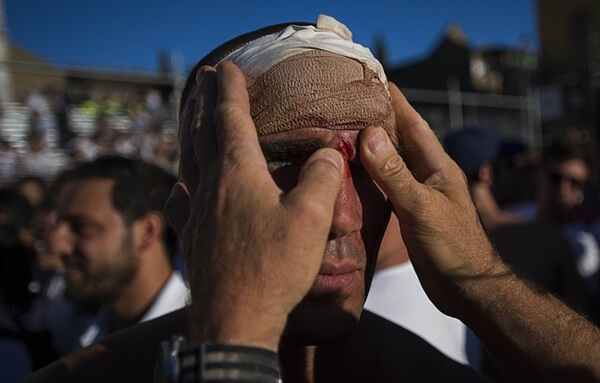
In the 17th century, the game popularity was waned but soon it was revived in 1930 with the final scheduled each year on the feast day of the city’s patron saint, St John the Baptist
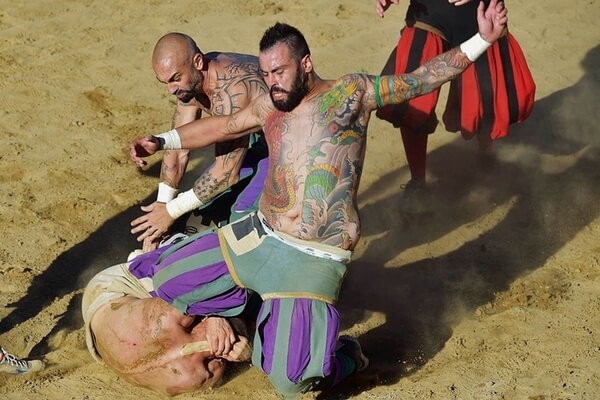
In 1574, a fight was staged to honor Henry III of France when he stayed in Venice, he said the event was ” too small to be a real war and too cruel to be a game “
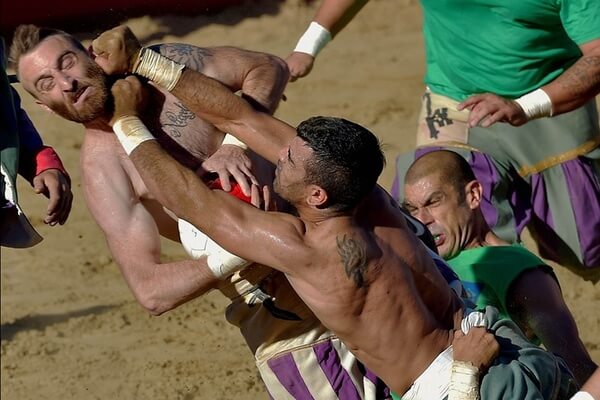
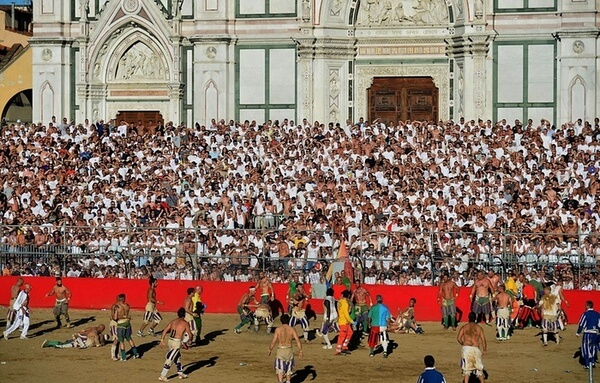
In 2007, the sport was given a ban of one year because a brawl broke out and 50 players were taken to court
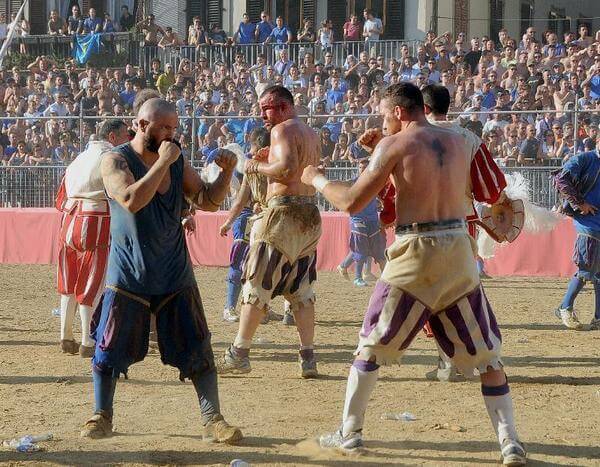
Players fighting for possession of the ball
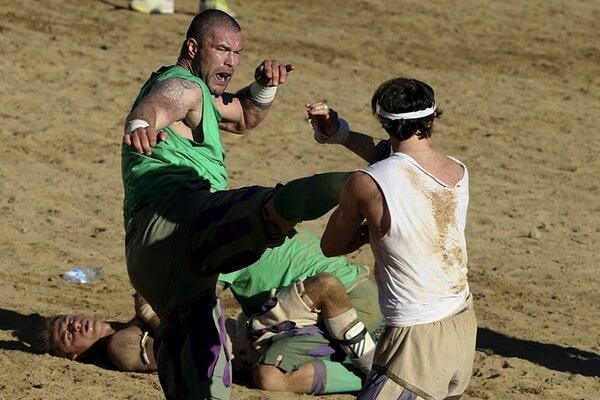
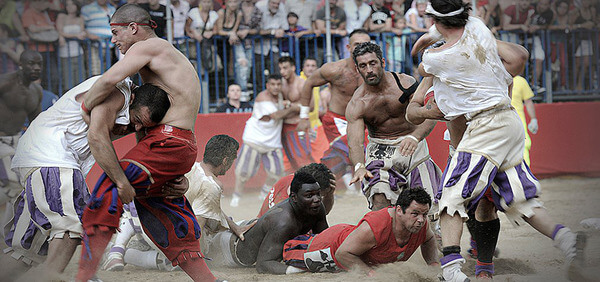
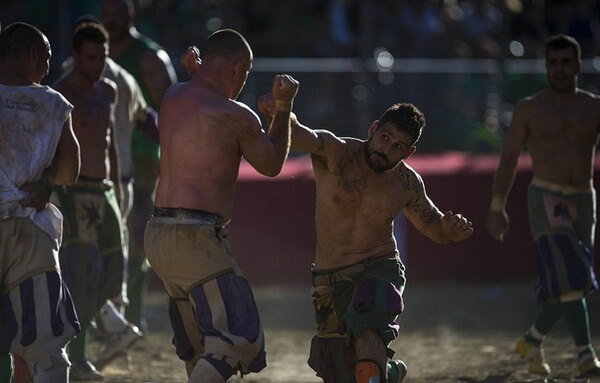
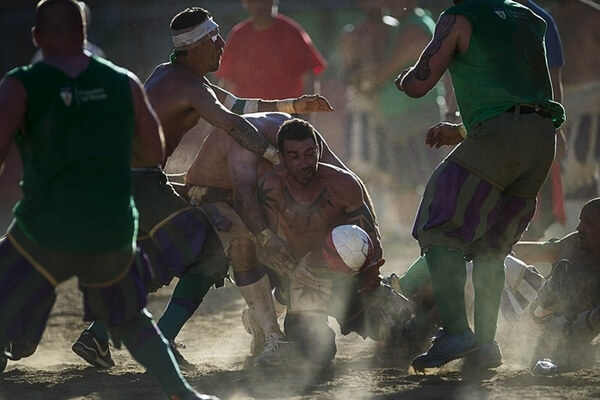
The players of Santo Spirito Bianchi celebrate their win in the finals, the winning team is presented with a Chianina cow, one of the oldest breeds of cow in existence
